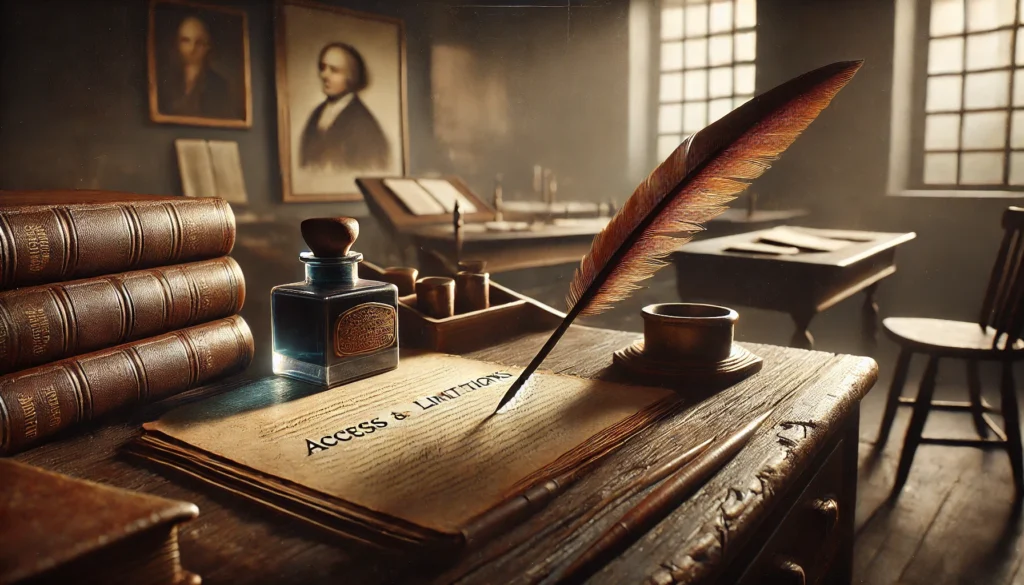Before the arrival of the Spanish colonizers, education in the Philippine archipelago was largely informal and centered around practical skills. Indigenous communities passed down knowledge through oral traditions, apprenticeships, and daily life experiences. Children learned survival skills, cultural practices, and societal norms from their elders and community members. This system, while effective for maintaining cultural continuity, lacked the formal structure that would be introduced by the Spanish.
The Arrival of Spanish Education
The Spanish colonization of the Philippines, which began in 1565, brought significant changes to the educational landscape. The Spanish introduced a formal education system that was heavily influenced by their own European model and closely tied to the Catholic Church. This new system aimed to achieve two primary goals: to spread Christianity and to assimilate the Filipino population into Spanish culture.
Structure and Administration of Spanish Colonial Education
The Role of the Catholic Church
The Catholic Church played a central role in the administration of education during the Spanish colonial period. Various religious orders, including the Augustinians, Franciscans, Jesuits, and Dominicans, were tasked with establishing and running schools throughout the archipelago. These religious orders not only provided education but also served as the primary conduits for spreading Spanish culture and Catholicism.
Types of Schools Established
The Spanish colonial government, in collaboration with the Catholic Church, established several types of educational institutions:
- Primary Schools: Known as “escuelas de primeras letras,” these schools provided basic education to children.
- Secondary Schools: Focused on higher learning and preparation for university studies.
- Seminaries: Dedicated to training future priests and religious leaders.
- Universities: The highest level of education, with the University of Santo Tomas being the most prominent example.
Curriculum and Subjects Taught
The curriculum in Spanish colonial schools was heavily influenced by European educational traditions and Catholic doctrine. Common subjects included:
- Catechism and Religious Studies
- Spanish Language and Literature
- Latin
- Arithmetic and Mathematics
- Philosophy
- Rhetoric and Grammar
Table 1: Common Subjects in Spanish Colonial Schools
| Subject | Purpose |
|---|---|
| Catechism and Religious Studies | To instill Catholic faith and values |
| Spanish Language and Literature | To promote Spanish culture and language |
| Latin | For advanced studies and religious texts |
| Arithmetic and Mathematics | Basic numerical skills |
| Philosophy | To develop critical thinking within Catholic framework |
| Rhetoric and Grammar | To improve communication skills |
Access to Education: Opportunities and Limitations
Social Stratification and Educational Access
Access to education during the Spanish colonial period was heavily influenced by social class and ethnicity. The educational system reinforced existing social hierarchies, with opportunities for advanced learning primarily reserved for the elite classes.
- Peninsulares (Spanish-born individuals living in the Philippines) and Criollos (individuals of Spanish descent born in the Philippines) had the most access to education at all levels.
- Mestizos (individuals of mixed Spanish and Filipino heritage) often had more educational opportunities than native Filipinos.
- Indios (native Filipinos) generally had limited access to education, particularly at higher levels.
Gender Disparities in Education
Gender played a significant role in determining educational access during the Spanish colonial period. While some progress was made over time, significant disparities remained:
- Boys generally had more educational opportunities than girls.
- Girls’ education often focused on domestic skills and religious instruction.
- Some convents provided education for girls, but this was limited in scope and availability.
Geographic Disparities in Educational Access
The availability of education varied greatly depending on geographic location:
- Urban areas, particularly Manila, had more educational institutions and opportunities.
- Rural areas often lacked schools or had very limited educational resources.
- Remote islands and mountainous regions had the least access to formal education.
Table 2: Educational Access by Social Group and Location
| Social Group | Urban Areas | Rural Areas |
|---|---|---|
| Peninsulares/Criollos | High | Moderate |
| Mestizos | Moderate to High | Low to Moderate |
| Indios | Low to Moderate | Very Low |
The Impact of Spanish Colonial Education
Literacy and Language
The Spanish colonial education system had a significant impact on literacy and language in the Philippines:
- Spanish became the language of government, education, and high culture.
- Literacy rates improved among those with access to education, but remained low for the majority of the population.
- Local languages and scripts, such as Baybayin, declined in use and importance.
Cultural and Religious Transformation
Education under Spanish rule played a crucial role in the cultural and religious transformation of Philippine society:
- Catholicism became deeply ingrained in Filipino culture.
- Spanish cultural norms and values were internalized by many educated Filipinos.
- Traditional Filipino beliefs and practices were often suppressed or marginalized.
Creation of an Educated Elite
The limited access to higher education resulted in the creation of a small but influential educated elite:
- This group, known as the Ilustrados, would later play a crucial role in the Philippine independence movement.
- Many Ilustrados were educated in Europe and brought back new ideas of nationalism and reform.
Reforms and Changes in the Educational System
The Educational Decree of 1863
The Educational Decree of 1863 marked a significant attempt at reform in the Philippine educational system under Spanish rule:
- It established a free primary education system for all Filipino children.
- Normal schools were created to train teachers.
- The decree aimed to standardize the curriculum and improve the quality of education.
Challenges in Implementing Reforms
Despite the ambitious goals of the 1863 decree, its implementation faced numerous challenges:
- Lack of funding and resources hindered the establishment of schools in many areas.
- Shortage of qualified teachers, especially those proficient in Spanish.
- Resistance from some elements of the colonial administration and religious orders.
Late Colonial Period Developments
In the late 19th century, further changes and developments occurred in the Philippine educational system:
- Increased secularization of education, with more lay teachers being employed.
- Expansion of subjects taught, including some scientific and technical courses.
- Growing demand for education among Filipinos, particularly in urban areas.
Legacy and Long-term Effects
Enduring Influence on Philippine Education
The educational system established during the Spanish colonial period left a lasting impact on Philippine education:
- The structure of primary, secondary, and tertiary education remained largely intact.
- Catholic educational institutions continued to play a significant role in post-colonial Philippines.
- The emphasis on rote learning and memorization persisted in many schools.
Language and Cultural Legacy
The Spanish colonial education system had profound effects on Philippine language and culture:
- Spanish loanwords became an integral part of Filipino languages.
- Catholic religious practices and beliefs remained deeply ingrained in Filipino culture.
- The concept of formal, Western-style education became the norm.
Social and Political Consequences
The limitations and inequalities in the Spanish colonial education system had long-lasting social and political consequences:
- Educational disparities contributed to ongoing social inequalities.
- The educated elite played a crucial role in shaping the Philippine nation-state.
- The struggle for educational access became a key issue in Philippine politics and social movements.
Comparative Perspective: Education in Other Spanish Colonies
Similarities with Other Spanish Colonial Territories
The Philippine experience under Spanish colonial education shared many similarities with other Spanish colonies:
- The central role of the Catholic Church in education.
- The use of education as a tool for cultural assimilation.
- Limited access to higher education for indigenous populations.
Unique Aspects of Philippine Colonial Education
Despite these similarities, there were some unique aspects to the Philippine experience:
- The relatively late implementation of widespread primary education compared to some other colonies.
- The strong influence of religious orders in education, even compared to other Spanish colonies.
- The development of a distinct Ilustrado class that played a crucial role in the independence movement.
Table 3: Comparison of Education in Spanish Colonies
| Aspect | Philippines | Latin America |
|---|---|---|
| Church Role | Very Strong | Strong |
| Indigenous Education | Limited | Varied (more extensive in some areas) |
| University Establishment | Late (1611) | Earlier (e.g., Mexico 1551) |
| Ilustrado Movement | Prominent | Less Prominent |
Critical Evaluation of Spanish Colonial Education
Positive Contributions
While the Spanish colonial education system had many limitations, it also made some positive contributions:
- Introduction of formal, structured education system.
- Establishment of the first universities in the Philippines.
- Improvement in literacy rates, albeit limited to certain segments of society.
Criticisms and Shortcomings
The Spanish colonial education system has been widely criticized for various shortcomings:
- Limited access and social inequality in educational opportunities.
- Use of education as a tool for cultural suppression and colonial control.
- Neglect of indigenous knowledge and languages.
- Inadequate preparation of Filipinos for self-governance and economic development.
Debates and Controversies
The legacy of Spanish colonial education in the Philippines continues to be a subject of debate among historians and educators:
- The extent to which it laid the groundwork for modern Philippine education.
- Its role in shaping Philippine national identity.
- The long-term impact of its limitations on Philippine social and economic development.
Conclusion: The Complex Legacy of Spanish Colonial Education
The educational system under Spanish rule in the Philippines left a complex and multifaceted legacy. While it introduced formal, Western-style education to the archipelago and established institutions that would shape the future of Philippine education, it also reinforced social inequalities and was used as a tool for colonial control and cultural assimilation.
The limited access to education, particularly higher education, created a small but influential educated elite that would later play a crucial role in the Philippine independence movement. However, this same limitation contributed to ongoing social and economic disparities in Philippine society.
The influence of the Spanish colonial education system can still be felt in modern Philippines, from the structure of the education system to the role of Catholic educational institutions. Understanding this historical context is crucial for comprehending the challenges and opportunities facing Philippine education today.
As the Philippines continues to develop and reform its education system, it grapples with both the positive and negative legacies of its colonial past. The ongoing debates about language of instruction, cultural representation in curricula, and equitable access to quality education all have roots in the complex history of education under Spanish rule.
Disclaimer: This article aims to provide an accurate and comprehensive overview of the educational system under Spanish rule in the Philippines. However, historical interpretations may vary, and new research may reveal additional insights. Readers are encouraged to report any inaccuracies or provide additional information for review and potential updates to this content.




